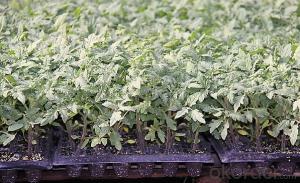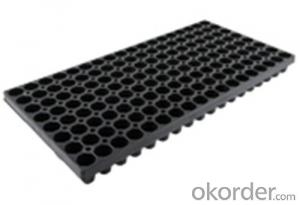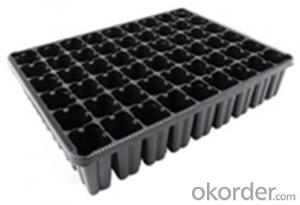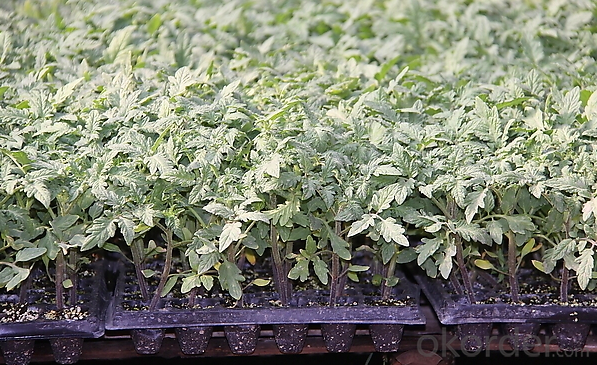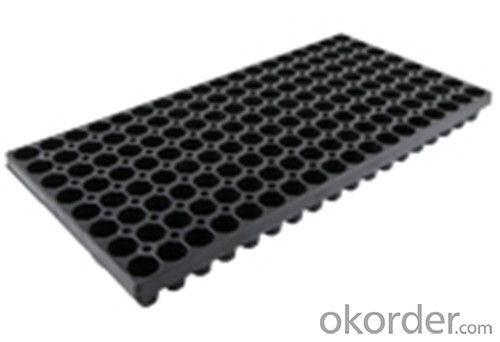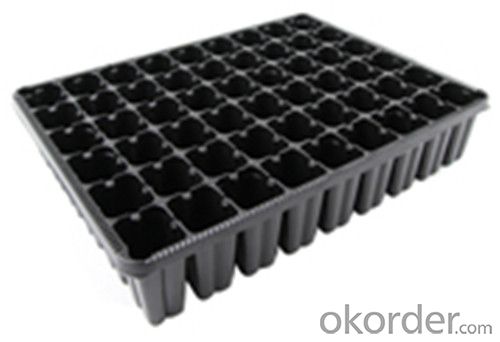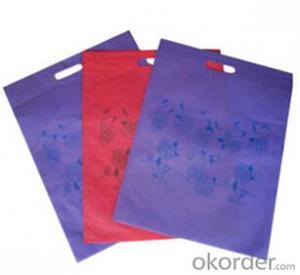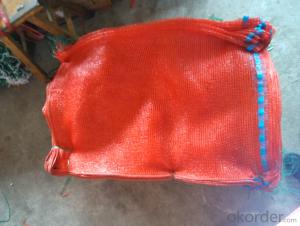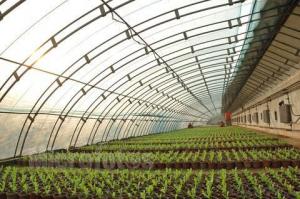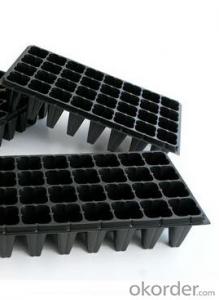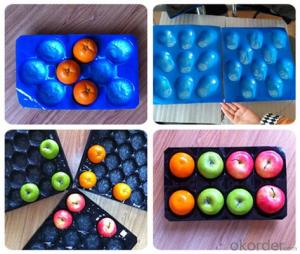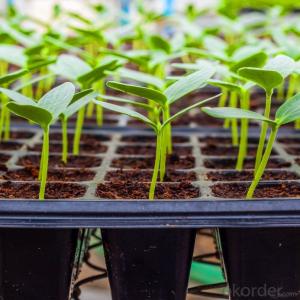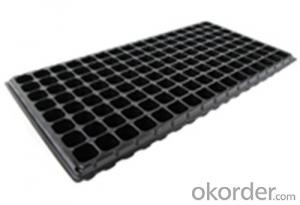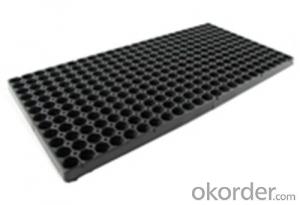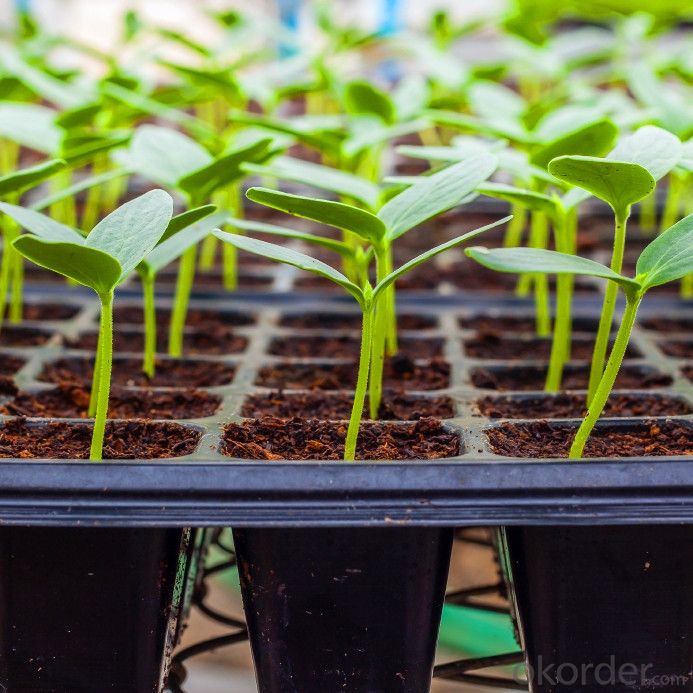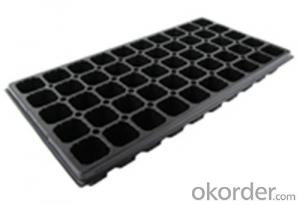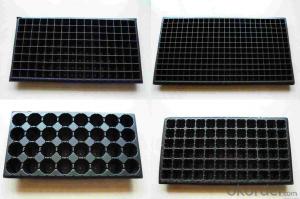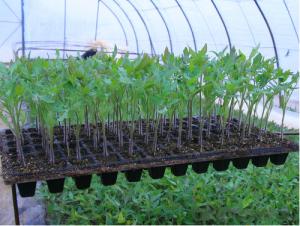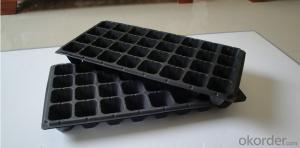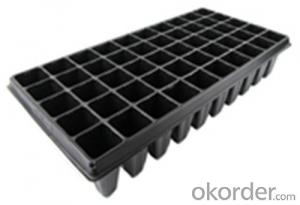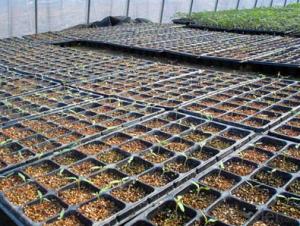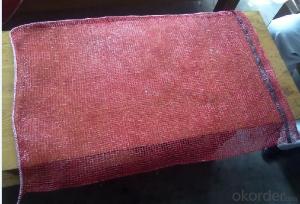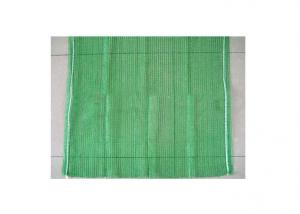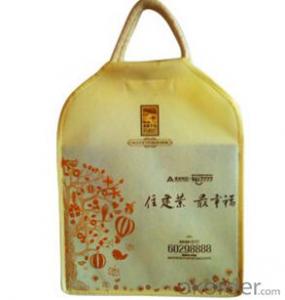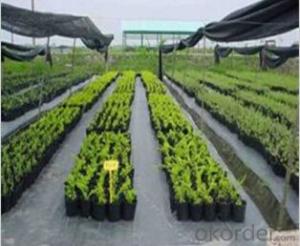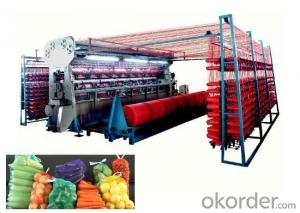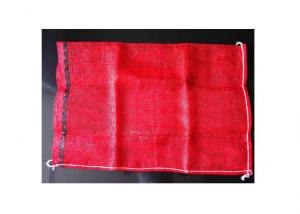Planting Plastic Seeding Tray for Greenhouse China Suplier/Good Price
- Loading Port:
- China main port
- Payment Terms:
- TT OR LC
- Min Order Qty:
- 1000 pc
- Supply Capability:
- 10000000 pc/month
OKorder Service Pledge
OKorder Financial Service
You Might Also Like
Structure of the seed tray: · Top quality and competitive price. · Variety design and good appearance. · Easy to use, and remove. · Durable and reusable. · Eco-Friendly.
Advantages: · Top quality and competitive price. · Variety design and good appearance. · Easy to use, and remove. · Durable and reusable. · Eco-Friendly.
Application: · Ideal for Starting seeds and Transplanting Seedling. · Suitable for both manual and automatic planting. · Suitable for Propagating Vegetables, Flowers and other plant from seed · in green-house or indoors.
Description Main Features of the seed tray: · Ideal for Starting seeds and Transplanting Seedling. · Suitable for both manual and automatic planting. · Suitable for Propagating Vegetables, Flowers and other plant from seed in green-house or indoors. Using time: · thickness of 0.5mm can be used 1 to 2 times. · thickness of 0.6mm can be used 3 to 4 times. · thickness of 0.7mm can be used 5 to 6 times. · thickness of 0.8mm can be used 7 to 8 times. · thickness of 0.9mm can be used 8 to 9 times. · thickness of 1.0mm can be used 8 to 10 times. Thickness vs. Weight: · Thickness of trays are from 0.5mm to 1.0mm. · 1.0mm: 155g±5g; 100pcs/ctn. · 0.9mm: 140g±5g; 120pcs/ctn. · 0.7mm: 110g±5g; 150pcs/ctn. · 0.6mm: 95g±5g; 180pcs/ctn. · 0.5mm: 80g±5g; 200pcs/ctn.
Seed Tray Specification: Materialps/pvcThickness0.5mm-1.5mm, standard:1mmWeight80g(±5)g-230g(±5)g, Standard weight:155g(±5)gSizelength:490mm-540mm, width:190mm-345mm,depth:25mm-150mm Standard:54mmX28mmCell count18-512Packagein cartonUsing time8-10 times
FAQ: Q:How Can I Get A Sample? A:You can get samples by communicate with our export sales. Q:How Long Is Delivery? A:Delivery time will be 7-25 days according to order quantity. Q:What Is The MOQ? A:Our MOQ is 1*20FT container quantity, allow to mix several items. Q:What Is Our Normal Payments Terms? A:Our normal payment terms now is T/T, L/C or Western Union,Papal. Q:How Do I Order Your Products? A:You can check our website for any items you interest and you can also get communication with our export sales and order for it accordingly. Q:What Kinds Of Material We Use In Our Product? A:Our plastic flower pots use material such as PP polymer or PE polymer.
|
- Q: What are the eco-friendly alternatives to traditional mulch films used in agriculture?
- <p>Yes, there are several alternative materials for making mulch films that are more environmentally friendly. Biodegradable films made from materials like polylactic acid (PLA), polyhydroxyalkanoates (PHA), and starch-based polymers are gaining popularity. These materials are derived from renewable resources and can decompose naturally in the soil, reducing plastic pollution. Additionally, there are mulch alternatives such as wood chips, straw, and other organic materials that can be used to cover soil, providing similar benefits to plastic mulch films but with less environmental impact.</p>
- Q: Are there alternative materials that farmers can utilize for agricultural activities?
- <p>Yes, farmers can use alternative materials for agricultural purposes. These can include recycled plastics for mulching, biochar as a soil amendment, and biodegradable materials for crop protection. Additionally, farmers may use alternative energy sources like solar or wind power to reduce their carbon footprint. The use of alternative materials is gaining traction as it promotes sustainability and can reduce costs in the long run.</p>
- Q: What are the benefits of using plastic greenhouse covers?
- Plastic greenhouse covers offer several benefits, including providing insulation to maintain a stable temperature, protecting plants from harsh weather conditions, preventing pest infestations, and allowing sunlight to penetrate for photosynthesis. Additionally, plastic covers are cost-effective, easy to install and replace, and can be customized to fit different greenhouse sizes.
- Q: What are some ground cover options for regions with deer or rabbit browsing?
- Some ground cover options for regions with deer or rabbit browsing include plants such as creeping thyme, lamb's ear, sedum, hostas, and vinca minor. These plants have characteristics that make them less appealing to deer and rabbits, making them more likely to survive and thrive in such regions.
- Q: What are the different types of plastic clips used in horticulture?
- There are various types of plastic clips commonly used in horticulture, including plant clips, vine clips, tomato clips, and grafting clips. These clips are designed to provide support and secure plants, vines, and branches in order to promote healthy growth and prevent damage.
- Q: Can nursery trays be used for starting tree transplants?
- Yes, nursery trays can be used for starting tree transplants. Nursery trays are designed to provide a controlled environment for seeds or seedlings to germinate and grow. They offer advantages such as efficient use of space, easy handling, and better root development. However, it is important to select trays that are suitable for the size and type of tree transplants being started.
- Q: I'm doing a debate at school tomorrow, about plastic surgery, and I have to be for it. I've got 3 ok arguments so far. What would you say to defend plastic surgery?
- hard aspect. try searching using yahoo. just that could help!
- Q: What are the different types of agricultural plastic wraps?
- There are several types of agricultural plastic wraps, including silage wraps, greenhouse films, mulch films, and bale wraps.
- Q: Can nursery trays be used for starting perennial transplants?
- Yes, nursery trays can be used for starting perennial transplants. These trays provide a controlled environment for germinating seeds or propagating cuttings, allowing for better root development and transplant success.
- Q: Are agricultural plastic products suitable for organic farming?
- No, agricultural plastic products are generally not suitable for organic farming as they are often produced using synthetic materials and chemicals that are not in line with organic farming principles. Organic farming emphasizes the use of natural and biodegradable materials to maintain soil health and minimize environmental impact.
Send your message to us
Planting Plastic Seeding Tray for Greenhouse China Suplier/Good Price
- Loading Port:
- China main port
- Payment Terms:
- TT OR LC
- Min Order Qty:
- 1000 pc
- Supply Capability:
- 10000000 pc/month
OKorder Service Pledge
OKorder Financial Service
Similar products
Hot products
Hot Searches
Related keywords
